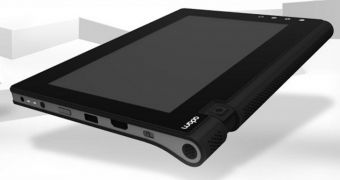If anyone was wondering how it is that Notion Ink's Adam Tablet II doesn't use an NVIDIA Tegra platform, the company actually took some time to clarify that.
It wasn't too long ago that the Adam II tablet from Notion Ink was officially introduced to the general public in all its glory.
What immediately followed was a bit of confusion amongst the people who surf the web often, as many had expected NVIDIA's Tegra platform to be chosen.
“We had a lot of similar questions while we wanted to opt for one. If you followed Kernel developments you’d know that OMAP was definitely the next SoC supported by Google, so this decision had to be made on our end and fast,” the company said on this blog.
Adam II will not use Tegra 2 or Tegra 3, despite the positive reputation they have amassed.
Instead, Notion Ink selected the Texas Instruments TI OMAP44xx with PowerVR SGX5xx graphics.
The company blog justified the choice by drawing attention to the matter of company expertise and available programmers.
Long story short, Notion Ink can make most of a Texas Instruments chip but not the other.
While the Tegra has a high theoretical performance, the power wasn't fully utilized in the original Adam, so the goal is to avoid a repeat of such a situation.
“Unless as an OEM you can’t get 100% out of these chips, all benchmarks, specifications and latest developments are useless,” the company said.
“So the answer wasn’t based on which chip can beat the other one, but which one can we leverage to the highest possible extent. And in this regard OMAP definitely beats any SoC out there w.r.t. documentation, number of use-case modeled, white papers, reference documents and much more. Bangalore also hosts a lot of Ex-TI professionals who helped build OMAP, so answers are not tough to find.”

 14 DAY TRIAL //
14 DAY TRIAL //